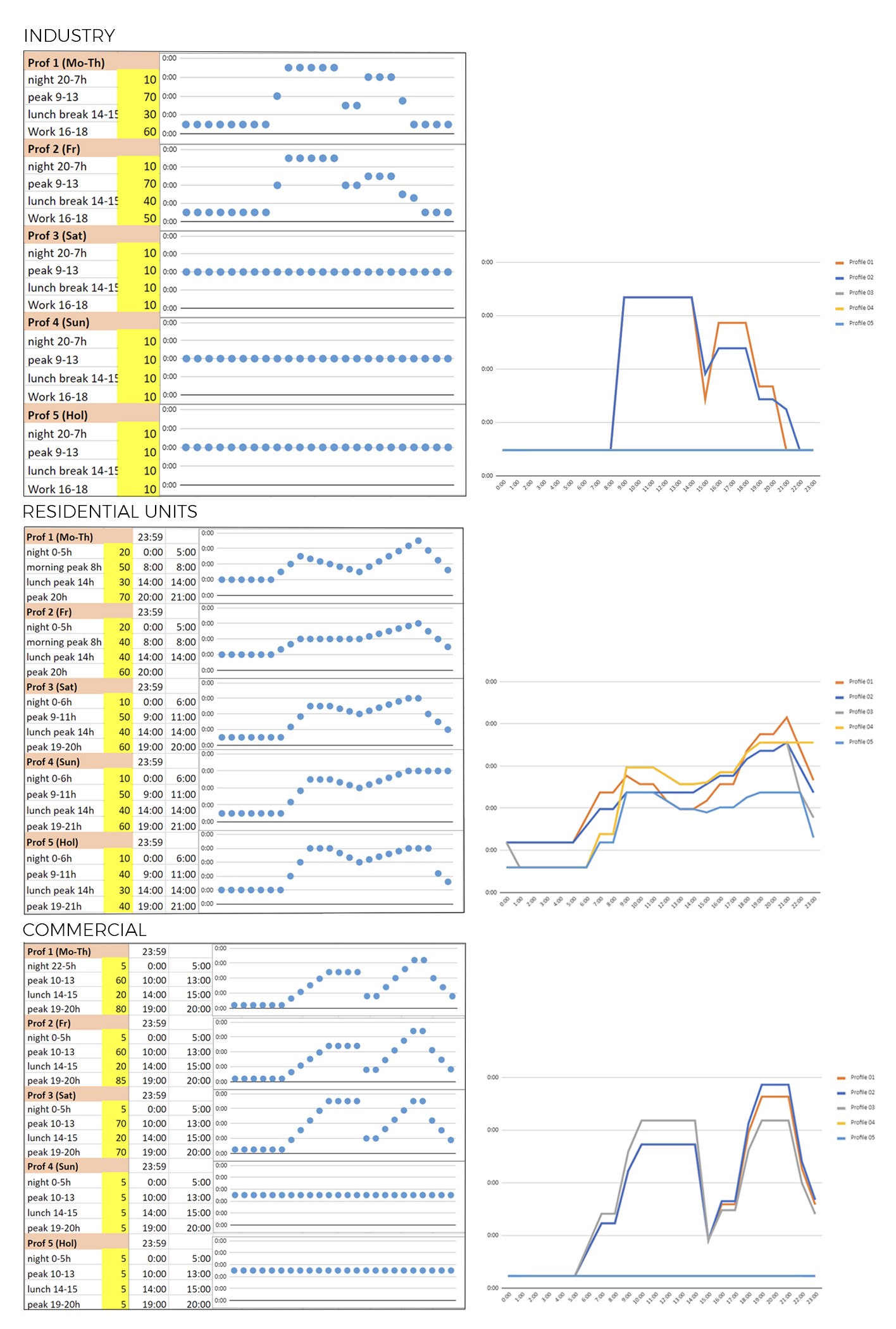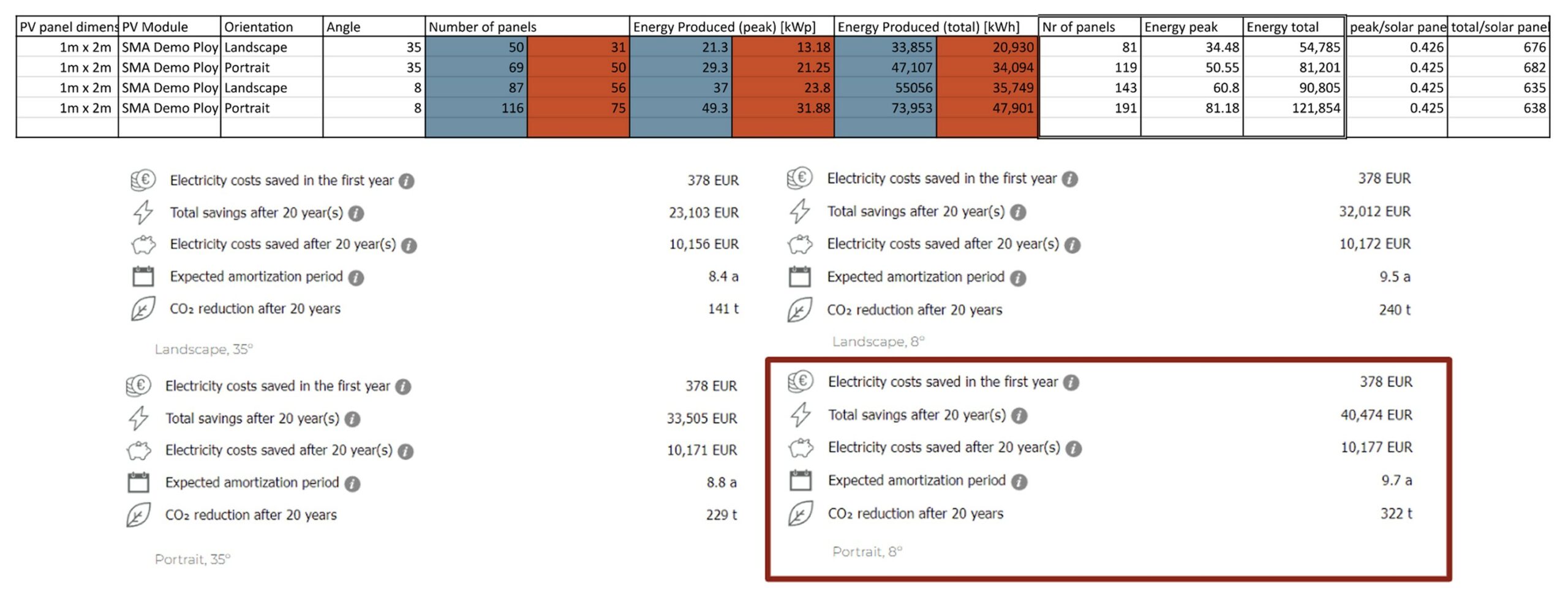Incorporating the principles of Industry 4.0, our architectural project redefines urban living by seamlessly integrating sustainable design strategies with advanced manufacturing techniques. With a focus on promoting bicycle culture and health, our industry manufactures bikes.
In this module, we understood energy consumption of the building and implemented strategies to generate the required amount of energy. We explored different means of generating renewable energy.
Energy and Power Consumption
The first step consists of identifying the energy and power consumption for every space of the building. To do so, we tried dividing the spaces as much as possible according to it’s real-life everyday use. Doing so, also results in a document that can be adapted to changing loads in the future and quickly generate new numbers for the demand.

Energy Consumption
An important aspect of the energy demand, is that the load profiles vary during the day and according to the use(r)s. The total amount of energy needed will not be required all at the same time. We thus defined different load profiles. For example, for the industry, the main energy demand will happen during working hours. For the housing units on the other hand, there will be a peak demand in the morning and in the evening around dinnertime.
Including all these load profiles in the design of our PV-panel layout alllows to identify whether a battery is needed, how much energy is demanded or saved and when.

Sunny Design
We uploaded our building massing on sunny design which helped us optimize the number and position of solar panels required on the rooftop. Since we are adding big 3D trusses serving as greenhouses on top of our buildings, the rooftop space on the north of these trusses can hardly be used to add solar panels. We tried filling as much of the leftover space as possible with solar panels.

Sunny Design Results
Using the sunny design simulator, we compared different positions of solar panels, both in terms of orientation (landscape vs portrait) and angle (35 vs 8 degrees). In terms of economic savings and CO2 reduction, we concluded that placing our solar panels in portrait mode at an angle of 8 degrees yields the best results. However, we still need a lot of additional alternative energy production. Hence, we will be adding translucent solar panels on our trusses.


